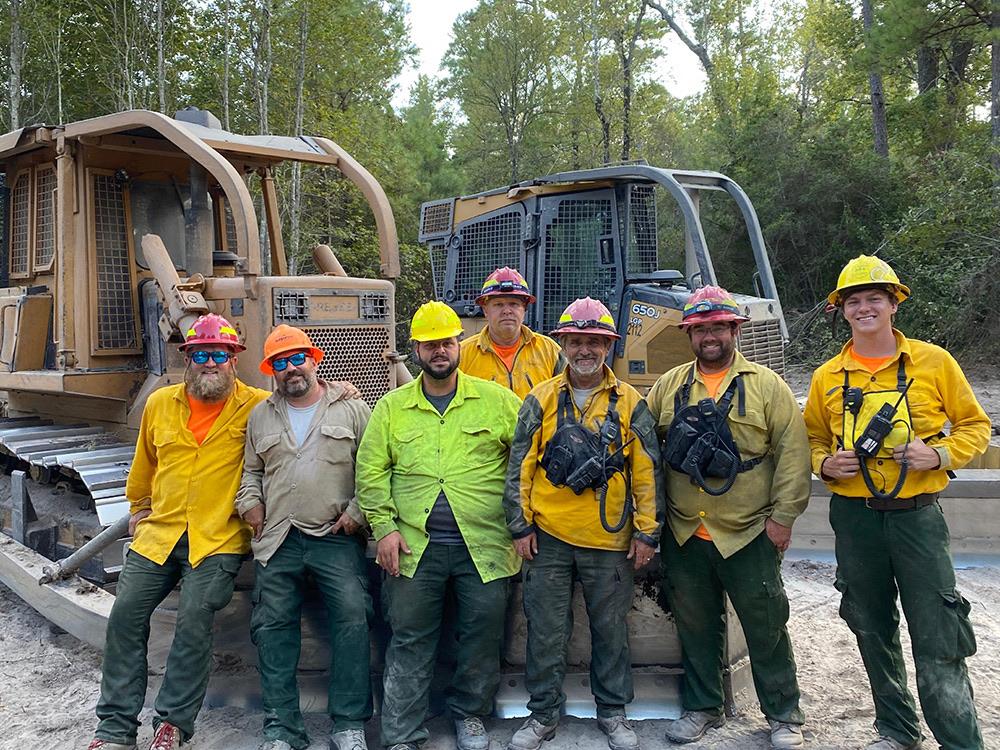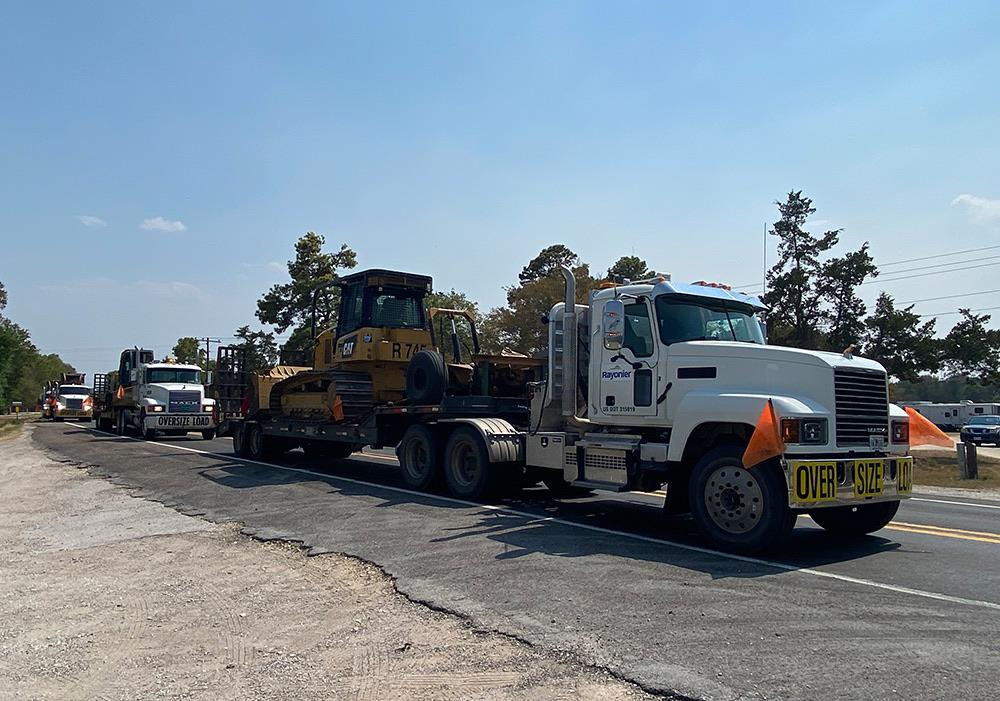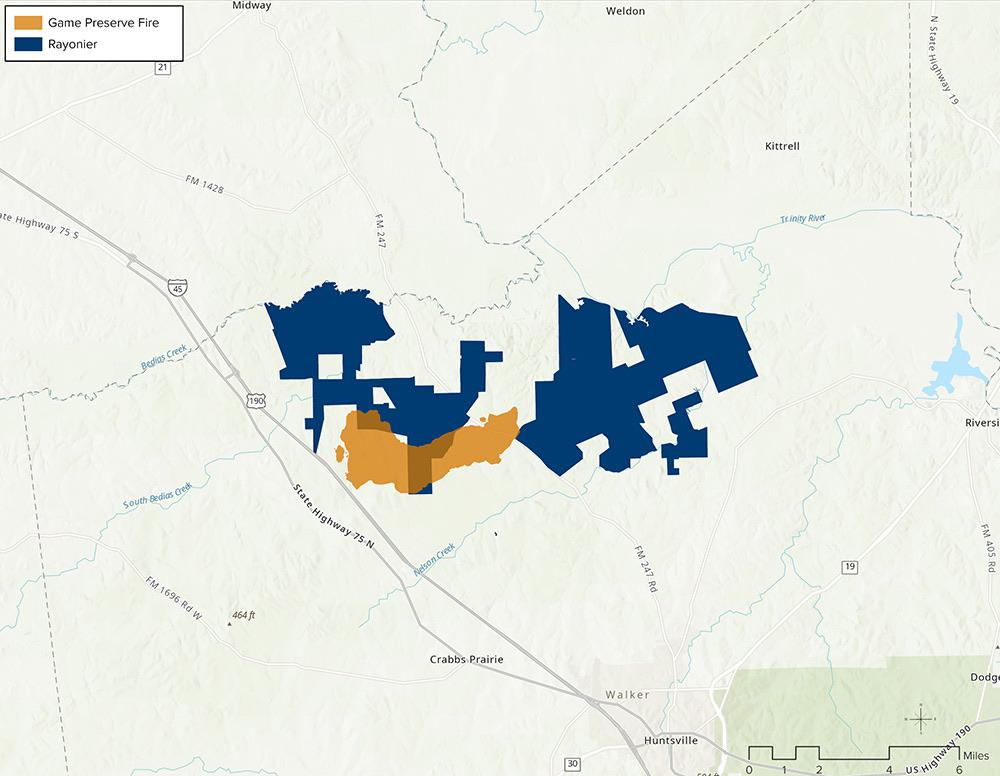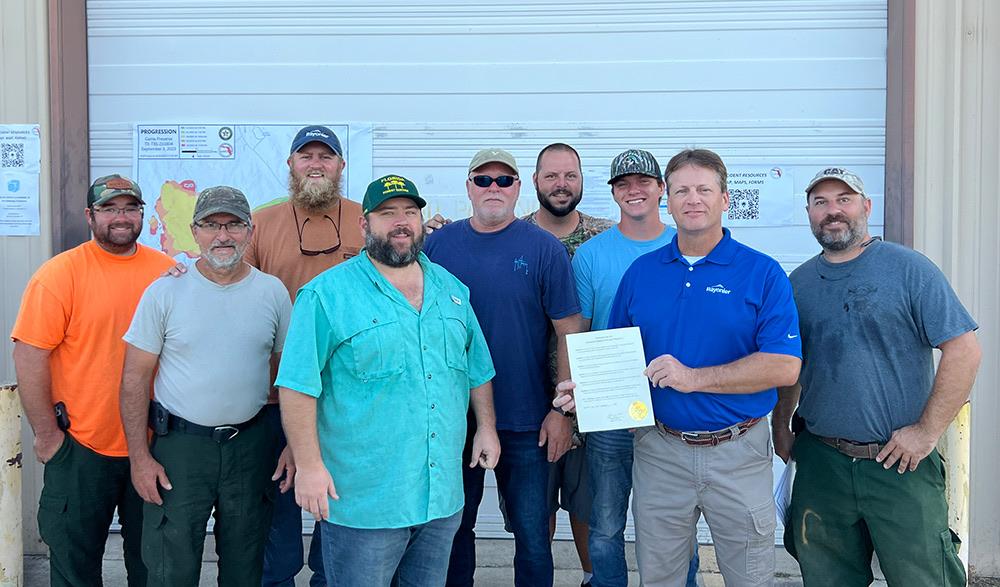Rayonier’s Fire Crews Unite To Battle Historic Wildfires in the Southwest U.S.
Published 05-03-24
Submitted by Rayonier

Originally published on Rayonier.com
In the face of an unprecedented historic wildfire season, Rayonier’s fire crews united across state lines to fight wildfires in the Southwest U.S. Their courageous efforts underscored the critical importance of preparedness, leadership and teamwork. They share their frontline experience and how it enhances our ongoing forest management efforts in safeguarding our forests and communities from wildfires.
In the scorching heat of August 2023, Rayonier’s Southwest teams in Louisiana and Texas braced themselves as wildfire season began.
Team members had monitored weather conditions for months, watching as a regional drought took hold over the summer and record-high temperatures persisted.
They went to wildfire prevention briefings, kept a close eye on our land, and when the first blaze broke out in Southwest Louisiana near one of our properties, they acted quickly to coordinate with state authorities and contractors to protect our forests.
But that first blaze was only the beginning of what would become a three-month battle against one of the worst wildfire seasons the region has seen in 100 years. In Louisiana, the Tiger Island Fire near Merryville was the largest fire ever recorded in the state’s history, impacting more than 31,000 acres. Rayonier’s Louisiana team pushed hard to protect our forests, monitoring and putting out fires that popped up even on nights and weekends. Soon, state and local fire services were overwhelmed and had to call on firefighters from surrounding states for support. Likewise, our Rayonier team needed help.
That’s when senior leadership in our Southwest Resource Unit (SWRU) called on Rayonier’s internal firefighting crew.
“This was the first time in Rayonier’s history that we brought a team over from Florida and Georgia,” says Billy Geier, Director of Operations for Rayonier, SWRU. “They traveled over 850 miles to get here. Watching the fire team roll through DeRidder, Louisiana, and pull into our office parking lot on Labor Day weekend was one of my proudest moments as a Rayonier employee.”

Fire triage—crisis in Texas
Billy’s relief didn’t last long, though. Just as our fire crew arrived in Louisiana, another wildfire broke out in Texas, threatening 20,000 acres of our forests. And just as in Louisiana, Texas resources were stretched thin. Rayonier’s fire crew pivoted—driving their trucks and bulldozers to Huntsville, Texas—to respond to this more urgent threat. What would become known as the Game Preserve Fire would span more than 4400 acres, coming dangerously close to local homes and causing dozens of residents to evacuate.
Operations Safety Manager Patrick Hughes, acting as task force leader, met with Texas fire coordinators for a briefing on the overall plan and to establish communication channels with air support before mobilizing his crew.
When they got to the head of the fire, they were the only firefighters on the ground. The Texas Forest Service and more than 100 local and state emergency personnel battled the rear of the fire as it threatened residential neighborhoods where dozens of people were forced to evacuate their homes. But this meant that the dangerous head fire was untended on the ground.
Our bulldozer operators, with the help of air support laying down fire retardant, started building containment lines at the head of the fire to stop its forward momentum.
“I’ve had the pleasure of working with bulldozer operators from all over the country,” says Patrick. “And I’ve never been so proud to work with anybody as I was with our guys. They hit the ground running and stayed in the fight and knocked it out. They put in more containment lines than any other agency and all of the lines held, which is incredible.”
At all times, safety measures were top of mind. The team used interactive field maps to monitor real-time data that included where the fire was; the locations of all fire personnel and EMS crews; and guidance on escape routes, firelines and safety zones. In addition, Patrick says every member of the team carried the Incident Response Pocket Guide, a universal safety standard used by firefighters across the nation. The guide includes detailed methods firefighters use to ensure safety comes first, including the 10 Standard Firefighting Orders and a document called “Watch Out Situations.”
Rayonier’s fire team works year-round to prevent and fight fires on our lands in the Southeast, so they were well-equipped and prepared for the job.
They brought four bulldozers with them, including three heavy- and one medium-sized bulldozers, to build containment lines and safety zones. They also brought a type 6 fire engine, which is a brush truck designed for off-road firefighting and includes a 300-gallon water tank.
The fire team’s task force has more than 100 years of combined experience fighting fire. Some have worked at Rayonier for decades and others come from a background of fighting fire alongside state and federal resources, where they fought extreme wildfires in multiple states.

Crucial support from SWRU staff and Texas neighbors
Forest Ranger Mike Stein says he was able to focus on his work at the head fire thanks to the support of SWRU leadership and administrative staff.
“When you’re having to operate every day for long hours, it’s nice not having to worry about anything else,” he says, noting it was a relief to have a hotel room and a hot shower waiting after working long, intense shifts. “When all of your logistics are being taken care of, you can go to the briefing in the morning and see that your lines have held and you’re ready to jump in and catch the next hot spot.”
The team also had support from locals who brought home-cooked meals to show their appreciation as the fire team protected their homes.
A county judge even stepped in to help. Judge Colt Christian of Walker County brought a fuel tanker when the team was running low, ensuring they could continue operations. He also arranged for a mechanic to come to the field and help with equipment issues.
“Normally on these larger, more complex fires we would have support from other agencies,” says Forest Ranger Andrew Register. “The judge took charge and made things happen that would normally be handled by a command team.”
Later, when the fire was contained, Judge Christian made a proclamation, thanking the Rayonier fire crew and other emergency personnel for their service. He said they were responsible for saving 54 homes in the fire’s path in what was known as the Game Preserve Fire, the largest wildfire in the county’s history.

The debrief: we learn from experience
In a debrief meeting, SWRU staff and Rayonier’s fire crew planned for next year’s wildfire season.
“This happened in the SWRU and it’s likely going to happen to another resource unit in the future,” says Senior Resource Land Manager Jesse Nichols, one of the foresters who manages our SWRU properties. “This has been a learning experience in preparedness and awareness.”
Technical Forester Jonathan Herrin says he hopes to see more foresters, managers and other staff learn from the fire crew. He earned his Wildland Fire Certification one day before the crew left for the SWRU and was able to go with them and get field training.
“How do we maintain that institutional knowledge of our operators?” he asks. “As a company, we need to keep that in mind and hand some of that knowledge down and get more folks involved in protecting our forests in the future.”
As we anticipate altered weather patterns in the years to come, we’ll rely on this institutional knowledge and the lessons we’ve learned fighting fire in the SWRU to protect our forests from fires and other environmental threats.
Thank you to our SWRU staff and Atlantic fire crew for their passion and dedication that helped protect Rayonier land and our neighbors in Texas! This is what it means to be One Rayonier.
You can learn more about how forestry companies like Rayonier prevent and respond to wildfires at rayonier.com/fire.

Rayonier
Rayonier
Rayonier (NYSE:RYN) is a leading timberland real estate investment trust with assets located in some of the most productive softwood timber growing regions in the United States and New Zealand. We own or lease under long-term agreements approximately 2.8 million acres of timberlands located in the U.S. South, U.S. Pacific Northwest and New Zealand. We are More than trees because we recognize that our 90+ years of success in the timberland industry comes from our people, an empowering culture and the courage to constantly challenge “the way it’s always been done.” Get to know us at www.rayonier.com.
More from Rayonier

